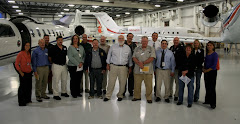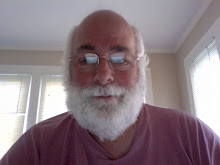Saturday, February 20, 2010
Great Technology Education Promotional Video
Sunday, January 3, 2010
Saturday, December 12, 2009
Best High Schools 2009 Search
Best High Schools 2009 Search
U.S.News & World Report—in collaboration with School Evaluation Services, a K-12 education and data research and analysis business that provides parents with education data—analyzed academic and enrollment data from more than 21,000 public high schools to find the very best across the country. These top schools were placed into gold, silver, bronze, or honorable mention categories.
Canton High School Hartford County, Canton, CT | Silver | |
Capitol Preparatory Magnet School Hartford County, Hartford, CT | Bronze | |
Darien High School Fairfield County, Darien, CT | Silver | |
Guilford High School New Haven County, Guilford, CT | Silver | |
Joel Barlow High School Fairfield County, Redding, CT | Silver | |
Lyme-Old Lyme High School New London County, Old Lyme, CT | Silver | |
New Canaan High School Fairfield County, New Canaan, CT | Silver | |
Northwestern Regional High School Litchfield County, Winsted, CT | Silver | |
Pathways to Technology Magnet School Hartford County, Bloomfield, CT | Bronze | |
Ridgefield High School Fairfield County, Ridgefield, CT | Silver |
| Silver | ||
Sports and Medical Sciences Academy Hartford County, Hartford, CT | Bronze | |
Staples High School Fairfield County, Westport, CT | Silver | |
University High School Hartford County, Hartford, CT | Bronze | |
Weston High School Fairfield County, Weston, CT | Silver | |
Wilton High School Fairfield County, Wilton, CT | Silver |
Monday, November 30, 2009
Tech Ed students at Berlin High lead the way with machine project
Tech Ed students at Berlin High lead the way with machine project
By SCOTT WHIPPLE
Staff writer
BERLIN — Holly Robillard says she spent hours at home on school nights tossing and turning, wondering how she was going to solve certain problems.
No, the 15-year-old Berlin High School sophomore wasn’t a potential guest on Dr. Phil’s sensational TV show. She was losing sleep over "a Rube Goldberg" machine: a complicated invention she and her classmates in David Salonia’s Tech Ed class were grappling with.
Though the project was continually on her mind, Robillard says the time and effort she invested in the project was well worth her time and effort.
Robillard, who wants to pursue a career in engineering, signed up for the course because she thought the project would be interesting. She wasn’t disappointed.
"I like to design and problem-solve," she said. "My partner. Kyle Kissane, and I were assigned one part of the project. We had to incorporate as many simple machines as possible."
Robillard and Kissame started with a pulley, that turned a crank, attached to a screw, pushing a marble onward and sending it down an incline plane. There needed to be enough of a tilt to make a U for at least five seconds.
Jon Hauptfeld, 15, a sophomore, worked on another section of the project. He needed to keep the marble rolling so it would roll into a cup, forcing it down, then another section up. The eight students working on the project weren’t allowed to buy the parts; they had to use whatever Salonia had in his back room.
Last Wednesday, Salonia’s second year engineering students gave a demonstration in the high school’s media center. Their "Rube Goldberg" type machine (so named for the famous cartoonist who created odd-shaped contrivances). The system of simple machines take marbles from one place to another, finally raising a flag three feet into the air.
"We call the machine ‘SMET,’" said Salonia, "for Simple Machine Energy Transformation. My students designed, tested and built the entire machine themselves as part of an engineering activity from Project Lead the Way. It’s truly a work of ingenuity."
Lead the Way is a national initiative to "ignite immagination and innovation" in the classroom.
The class received an A for the project; each student got a grade between B plus and A. Grades are based on an rubric that demands a participant work with certain constraints. Students are asked to draw up schematics, a concept they think will work. And, they keep a journal of their progress.
Often they discovered what they had sketched out didn’t work in practice.
Salonia’s students found the project challenging and frustrating. However, they learned patience, teamwork, trial and error, and that by working together they could accomplish a lot more. The students worked in two’s. Salonia reshuffled the teams so they wouldn’t just partner with their friends.
"In the workforce you have to work with other people," Salonia said. "It may not be a person you like; you can’t always work with your friend."
The project will stay on display in the school library for a year until next year’s class builds their project. In all, there are three sections to the machine, each one, 12 inches by 12 inches. It contains levers, triggers, springs, catches seesaws, planes, while one motion activates the other.
This is the fourth year Salonia has introduced a class project.
"The kids love it; they find it challenging," he said. "Because it’s about problem-solving and teamwork they can apply the concepts. Engineers are problem-solvers. They have to follow the rules. If they design a new car that has to get 30 miles an hour, they need to stay within constraints."
Salonia stresses that he is teaching how engineers think — from concept to manufactured product. Students can go further in engineering if they are interested in architecture or manufacturing or con-struction or woodworking. Out of eight kids in class, two are girls
"I think a lot of kids like the course because it’s a hands-on activity, a departure from sitting and listening in class," Salonia said.
Or, as Hauptfeld said, "It really helped me learn about machines."
Saturday, October 24, 2009
High School Student Nominations Wanted

| ||||||||||||||
Sunday, October 4, 2009
FREE OPEN SOURCE SOFTWARE

Definitions of Open source software on the Web:
- Open source software (OSS) is defined as computer software for which the source code and certain other rights normally reserved for copyright ...
en.wikipedia.org/wiki/Open_source_software - Open Source Software is software for which the underlying programming code is available to the users so that they may read it, make changes to it, and build new versions of the software incorporating their changes. ...
www.crosswebtech.com/information/glossary.htm - software in which the source code is by definition freely available to the general public for redistribution, modification, examination or any ...
www.salon.com/tech/fsp/glossary/ - Computer software that is distributed under a licensing arrangement and which allows the computer code to be shared, viewed and modified by other users and organisations. ...
www.parliament.vic.gov.au/SARC/E-Democracy/Final_Report/Glossary.htm - An overloaded term currently in vogue on the Internet, refers to software that is also distributed with the source code, the files that were used ...
www.ultra-high-speed-mn.org/CM/Custom/Glossary.asp - A method of software distribution where a programmer creates a program and makes it available for others to use without cost, as well as modify the source code and redistribute the modifications to the software user/developer community.
www.nursing-informatics.com/kwantlen/glossary4.html - An operating system and/or applications software for which the code is open for alteration by the public.
www.girpm.com/articles/glossary.asp - Software that can be copied and redistribute by the user. Many products are also free (FOSS).
www.timr.ca/RecentArticles/Online/terminology.html - Software with code that can be read, used and changed by any user, usually by license.
www.mikalac.com/www/webgloss.html - Is gratis software made freely available to anyone under the GNU General Public License (GPL)
www.igmmedia.co.uk/terms/
Wednesday, September 30, 2009
Name this CT Teacher
| From NorwalkPlus.com LOCAL
NORWALK, CT – Sept. 29, 2009 – The Northrop Grumman (NYSE: NOC) Foundation sent 30 educators representing various school districts throughout Connecticut, Maine, New Hampshire, New Jersey, New York and Rhode Island into weightlessness today as part of the Northrop Grumman Foundation Weightless Flights of Discovery Program, which aims to inspire and prepare the next generation of scientists, mathematicians and engineers – critical areas where the U.S. has fallen behind globally. The program, in its fourth year, provides educators with a once-in-a-lifetime opportunity to prepare for and participate in micro- and zero-gravity flights during which they test Newton's Laws of Motion with a variety of planned experiments. The experience and experiment results are captured through photos and videos that the teachers will then take into their classrooms to share with their students in order to demonstrate how exciting and cool careers in science, technology, engineering and math (STEM) can be. The United States is experiencing a shortage of college graduates in the STEM disciplines, a negative trend that bodes ill for the nation’s industries that depend on talented scientists and mathematicians. Because studies have indicated most children make the decision to pursue math and science education and careers during middle-school, Northrop Grumman developed the Weightless Flights of Discovery to engage teachers, and key influencers in the lives of students during these crucial years. The Northrop Grumman Foundation supports diverse and sustainable programs for students and teachers. These programs create innovative education experiences in science, technology, engineering and mathematics. |



